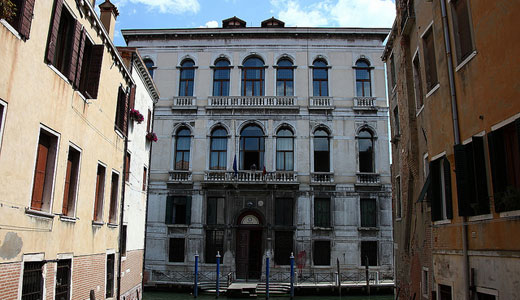
Italy’s government has unveiled a fire sale of some real gems of the country’s heritage.
Some 350 historic buildings in the capital and historic towns across the country are to be sold off, including Castello Orsini di Soriano in Cimiano, Palazzo Bolis Gualdo in Milan, and Palazzo Diedo in Venice.
Euros 42 billion worth of property is being put onto the market, a sizeable chunk of the country’s 600 billion-euro public property portfolio.
Prime Minister Mario Monti, a former European Commissioner, says the move is necessary to reduce the country’s debt and to reassure the speculators in the financial markets that have sent Italy’s borrowing costs to record highs.
National treasures gift wrapped for banks
In practice the policy is just one more gift to banks – which have plenty to spend what with the billions in government support and from the European Central Bank – and the rich – who in Italy are master tax dodgers and who yet again have escaped a wealth tax demanded by left-wingers and tax justice campaigners.
Meanwhile, the vast majority of Italians, who are being steadily impoverished by unemployment, reforms increasing job insecurity, and austerity measures cutting living standards, won’t get a look in. They face a plain and simple plunder of their heritage.
Among those horrified by the privatization of the country’s cultural jewels is Nicola Caracciolo from Italia Nostra, an organization that campaigns for the protection of the country’s artistic and natural heritage.
With the property market in the doldrums, public buildings that are currently for all in the nation will be sold off at bargain prices to a privileged few private individuals and deep pocketed organizations for their profit.
“It makes more sense and in the long run there will be a greater return if we invest in our heritage rather than sell it off,” Caracciolo told il Manifesto newspaper.
Lessons from the New Deal
Caracciolo argues that Italy, the eurozone’s third largest economy, should reject its destructive obsession with austerity, and instead learn from the New Deal that used public investment to lift the USA out of the Great Depression in the 1930s: among the most successful government programs of President Roosevelt was the Civil Conservation Corps, which provided a living, shelter, and training for 2.5 million young Americans in an ambitious conservation project for the American countryside.
In parallel to this, the Democrat President promoted a massive cultural program known as the Works Progress Administration. This boosted art, music, theatre, writing, and local history collections, with an emphasis on engaging Black and other minority ethnic communities. And it created tens of thousands of skilled jobs in the process.
Despite an unrivaled cultural patrimony and architecture, not to mention zillions of priceless artworks, Rome has a long history of neglect. Yet viewing the country’s Roman ruins, Renaissance churches and thousands of other historic treasures as assets rather than liabilities, would undoubtedly boost tourism, and crucially, cut the 2.8 million-strong dole queues, especially among the young, who are bearing the brunt of the economic crisis.
Sadly in Italy, it is Mario Monti, a blinkered, neo-liberal Eurocrat – not a visionary like Roosevelt – at the helm.
Tom Gill is a London-based journalist who writes regularly for the U.K.’s Morning Star, the daily socialist newspaper, and Tribune magazine, the labor weekly. Follow him on twitter @tomgilltweets.
Photo: Palazzo Diedo will be just one of many historic Italian buildings to be sold off. ValeryToth/Flickr












Comments